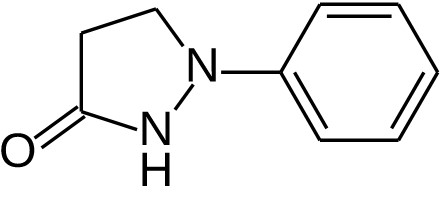Phenidone (JA biosynthesis)
Target: Phenidone (1-phenylpyrazolidinone) inhibits lipoxygenases including the lipoxygenase that accepts alpha-linolenic acid to give rise to 13-HPOT, the first committed step in the biosynthesis of jasmonates. Phenidone can, therefore, be used to block jasmonate biosynthesis.
Mode of action: the main application of phenidone is for photographic development. It is a strong reducing agent and, thus, allows, silver ions to turn into molecular silver, which is the reason for its use as developer. A mechanistic study revealed that its inhibition of lipoxygenase is not direct. Instead, the lipoxygenase accepts phenidone as substrate and generates a radical that causes irreversible damage of the protein (Cucurou et al., 1991). Therefore, it can be used to block jasmonate production, for instance during herbivory (Bruinsma et al., 2010).
Application: 5 mM for 30 min is sufficient for cell cultures, solubility is high (10% w/v in water or in EtOH)
Publications from our group using phenidone:
References
Cucurou C, Battioni JP, Thang DC, Nam NH, Mansuy D (1991) Mechanisms of inactivation of lipoxygenases by phenidone and BW755C. Biochemistry 30, 8964-8970
Bruinsma M, Van Broekhoven S, Poelman EH, Posthumus MA, Müller MJ, Van Loon JJ, Dicke M (2010) Inhibition of lipoxygenase affects induction of both direct and indirect plant defences against herbivorous insects. Oecologia 162, 393-404

